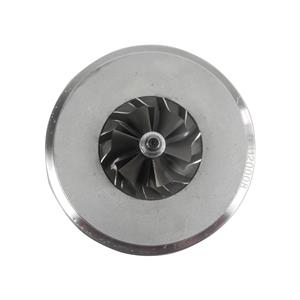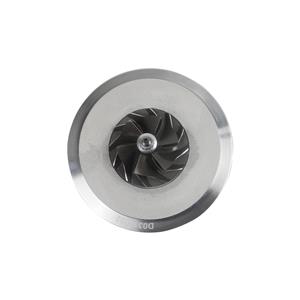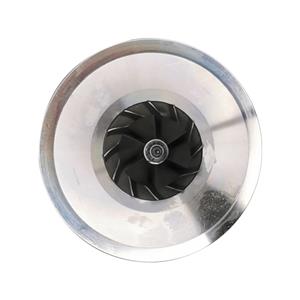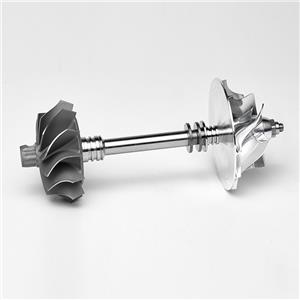Inspection and replacement judgment of turbocharger parts (I)
Inspection and replacement judgment of turbocharger parts (I)
1. Turbocharger floating bearing
The bearing of turbocharger usually adopts floating bearing or rolling bearing. High speed turbochargers use highly reliable floating bearings. There is a certain clearance between the floating bearing and the rotor journal and the bearing seat of the intermediate housing. During the operation of the turbocharger, the rotor shaft and the floating bearing are all floating in the lubricating oil, and there is no mechanical friction between them. The lubrication between the rotor shaft and bearing of the pressure booster is pressure lubrication. The lubricating oil comes from the main oil passage of the engine and enters the intermediate shell of the supercharger after being filtered by the fine filter. If the oil is dirty or deteriorated in use, the floating bearing is not easy to form oil film, and the bearing is easily scratched in semi dry friction, or even overheated to make the bearing deformed or blue. If there is scratch, deformation or blue phenomenon after disassembly, it needs to be replaced. If carbon deposits are found in the floating bearing in the middle of the turbocharger during inspection, the inlet and outlet of the lubricating oil of the turbocharger shall be dredged; Replace the oil filter element and fill with standard oil.
2. Thrust bearing plate
When the turbocharger is working, if the oil supply is sufficient, the thrust bearing plate will not be worn. However, if the oil is too dirty or deteriorated, it is easy to block the oil inlet hole, forming semi dry friction, causing wear and deformation. After disassembly, replace it as appropriate.
3. Maintenance of air compressor housing
If there is a slight scratch at the inlet of the pressurizing surface of the air compressor casing, the small burr and score on the compressor casing can be smoothed with fine abrasive cloth; If there is deep scratch at the inlet of the pressure surface of the compressor casing, it cannot be used. If the compressor casing is cracked or deformed, it shall be scrapped.
4. Maintenance of turbine casing
The function of the turbine shell is to collect the air flowing out of the diffuser and guide it to the compressor outlet. The air continues to decelerate and pressurize in the volute to complete the transformation from kinetic energy to pressure energy. Visually check whether the turbine shell is in contact with the impeller; Check the mounting flange and v-clamp for cracks. Check whether there is crack at the inlet end of the turbine shell and whether there is deformation and burning loss at the inlet and outlet. If there is crack, deformation, burning loss and serious corrosion, replace it with a new one. In general, the turbine and bearing seals shall be replaced after the tractor is operated in farmland or transported for 50000 ~ 60000 km.
5. Maintenance of bearing shell
Check the bearing shell for cracks at the oil inlet and return joints; Measure the inner diameter of bearing shell hole; Measure the length of the bearing shell from the outlet of the air compressor casing to the outlet of the turbine casing at four equal distances; If the measurement results show that the bearing shell is distorted, the bearing shell shall be scrapped.




